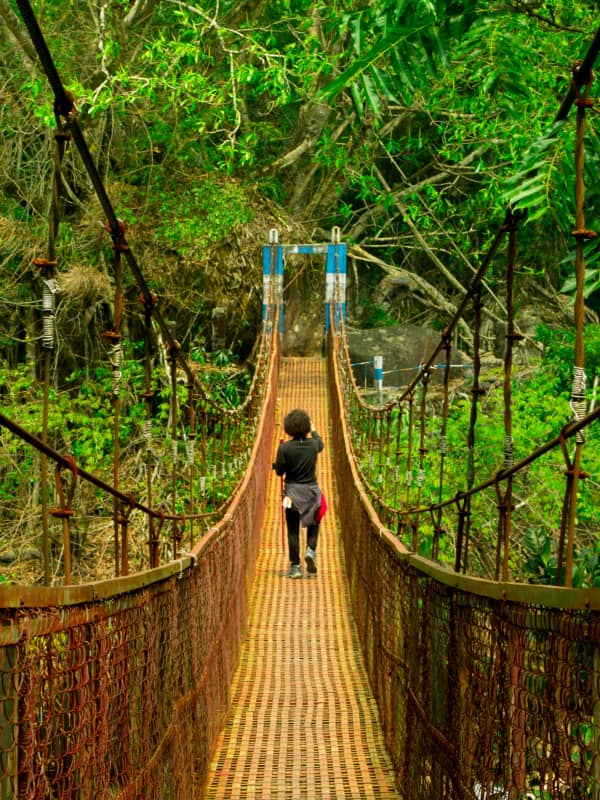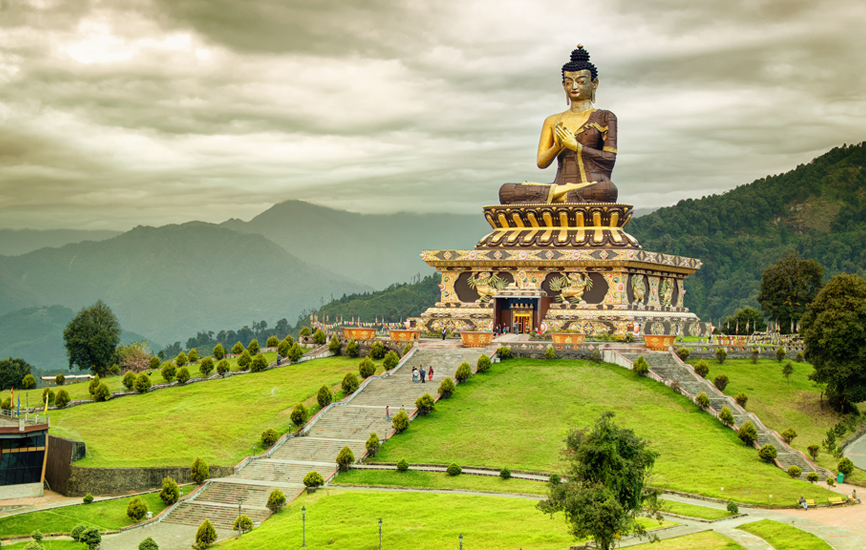Best Time to Visit North East
When is the best time to visit North East?
The best time to visit North East is between October and April. Those who want to visit the North East for sightseeing, cultural festivals, adventure sports, wildlife safari, and snowfall must consider the period between December to January. The weather in north east India varies depending on area and elevation. The temperature in north east India is sub-zero in the hilly terrain, while in the plains it fluctuates between 20°C to 30°C
This guide will help you understand the month-wise weather conditions, activities, and festivals to attend in the North East. So, go ahead and read the month-wise analysis of North East travel.
Visit North East in January
Plan a visit to the north east in January for an idyllic retreat amidst scenic nature. January is an excellent time to go on a jeep safari in Kaziranga National Park and spot elusive wildlife, including the one-horned rhinoceros. The top places to visit in the north east are Assam, Meghalaya, Nagaland, and the lowlands of Arunachal Pradesh. If you can brave the chilly weather and want to experience snowfall, head to Roing, Tawang and Ziro valley in Arunachal Pradesh. The average temperature in the north east ranges between 18°C to 14°C in the lowland areas, but decreases as one moves towards the mountainous regions. Be sure to pack thermals, jackets, windcheater, caps, gloves, and sturdy footwear for hiking and walking.
North East in January: Festivals and Events
- Bhogali (Magh) Bihu, Assam – Assam celebrates different kinds of Bihu throughout the year starting off with Bhogali (Magh) Bihu. The Bhogali or Magh Bihu is a harvest festival and is celebrated by communities expressing gratitude for the bountiful harvest. People participating in the festival gather around a bonfire called Meji and play traditional games, sing and dance. The festival commemorates community spirit and the abundant harvest.
- Jonbeel Mela, Assam – It is a community festival celebrated in Dayang Belguri in Morigaon district in Assam and some parts of Megahalaya. During this festival the centuries old barter-system is practised amongst the people of the hills and plains. In this three-day fair, people exchange spices, herbs, rice, fish, vegetables etc. Spending and feasting in make-shift bamboo huts is a common practice followed in the festival.

Visit North East in February
Experience the clement and gentle winters in the plains of the North East in February. The average temperature is around 14°C to 25°C, although the city-wise temperature may differ. For instance, in cities like Guwahati, the average temperature is 20°C, while in Shillong the average temperature is around 15°C. In hilly-terrains of the North East, temperature during night slips down in single digits, ranging from 6°C to 7°C. It is essential to pack your bags according to your travel itinerary. Keep warm layers, jackets, boots, mufflers and caps.
February is the peak time to visit North East top destinations like Assam, Meghalaya, and Nagaland. For those who want to experience the glacial weather can plan a trip to Gangtok or Tawang and Ziro valley in Arunachal Pradesh.
North East in February: Festivals and Events
- Karbi Youth Festival, Assam: Held on the outskirts of Diphu Town in Assam, Krabi Youth festival is one of the oldest festivals in Assam for the ethnic Kabi community. The festival aims to promote and preserve the culture of Karbi people for the upcoming generation. The 5-day festival comprises tribal rituals, enthusiastic folk dances, and musical performances. Visitors can explore exhibition halls and stalls, carrying displays and buy souvenirs such as the traditional Karbi waist jackets.
- Sekrenyi, Nagaland – A significant cultural festival of the Angami tribe of Nagaland. The festival lasts for 10 days in Dimapur. The highlight of the festival is a ritual called Thekra Hie, where all the young folks of the village sit together and sing traditional songs. Sacrificial ceremonies and tribal rituals are performed by the Angami tribe.
- Ashokastami Festival, Tripura – Also known by the name of Unakoti Festival, this is an annual religious festival celebrated in Unakoti. The festival also coincides with the Maghi Sankranti, where devotees perform a cleansing and purification ritual by plunging in a nearby natural reservoir called Ashtamikunda. The main attraction to witness in the festival is Unakoti Rock Carvings which features rock carving of Hindu deities such as Lord Shiva.

Visit North East in March
March offers the best climate to visit North East for families, couples, adventurers and solo travellers. In high-altitude areas of Arunachal and Sikkim, the temperature ranges from 10 to 15°C with clear blue skies and crisp fresh air. In the plains of the North East, the temperature ranges between 20°C to 29.6°C. March is an excellent month for hiking, trekking, visiting tea plantations and local sightseeing. The clear and balmy weather is the peak time to visit North East for wildlife enthusiasts. They easily go on a jeep safari to Manas National Park and Kaziranga National Park and witness exuberant flora and fauna. Top attractions to visit in the North East are Majuli (the freshwater island) in Assam, Sualkuchi, Nohkalikai Falls, Umiam Lake and Laitlum Canyon in Meghalaya, Sela Pass, Nuranang Falls, and Mechuka Valley in Arunachal Pradesh.
North East in March: Festivals and Events
- Losar Festival, Arunachal Pradesh: Celebrated by the Monpa tribe of Arunachal Pradesh, Losar is a Tibetan New Year festival which falls according to the Lunar calendar. Based on the calendar, it falls either in late February or early March. Cham (traditional mask dances), prayers, merit-making, and feasting on Tibetan culinary delights.
- Myoko Festival, Arunachal Pradesh: Myoko festival is a significant festival for the Apatani tribe of Arunachal Pradesh. The festival commemorates community spirit and social harmony. Participants of this festival engage in unique tribal rituals, perform traditional dance and music, pray, chant and ask blessings and protection from the spirits.

Visit North East in April
From April, the weather starts to become slightly hot and humid in the plains of north east India. The average temperature of 28.2°C in low lying areas, whereas in high-elevation areas the temperature ranges between 10°C to 23°C. April, which falls in the beginning of summer, is the best season to visit North East for trekking, hiking, exploring cascading waterfalls, visiting panoramic view points, and tasting delightful local cuisine. The fresh mountain air, beautiful landscapes, enchanting nature of North East attracts many visitors during this month. It is essential to carry warm layers and a jacket if you plan to visit the hills of North East as nights could be chilly. Carry sunscreen, sunglasses, hat and a reusable water bottle for outdoor activities. April offers the peak time to visit attractions in the North East including Meghalaya, Nagaland, Assam, Arunachal Pradesh, and Sikkim.
North East in April: Festivals and Events
- Rongali (Bohag) Bihu, Assam: Experience the rich and beautiful culture of Assam with the joyous Rongali Bihu. Celebrated as the Assamese New Year and the beginning of the sowing season, this Bihu includes songs, dance, feasting and large gathering of people in which they revel and interact with fellow attendees. People wear traditional attire—Mekhela Chador for women while men wear dhoti and kurta.

Visit North East in May
The weather starts to warm up even more in the North East region during May. The average temperature fluctuates between 30°C to 35°C in low lying areas, while the average temperature in the hills ranges from 14°C to 18°C (approximately). The weather in hilly terrains does rise a bit, but is cool and comfortable enough for witnessing scenic views, going on a village tour, and appreciating the flora and fauna of the North East. It is also a good time to go on hiking trails, camping and visiting tea estates. May falls in the shoulder season, making it the best season to visit North East for budget travellers. The best states to explore in North East India during the month of May are Sikkim, Nagaland, Meghalaya, Arunachal Pradesh. Assam typically has warm and sticky weather, especially in cities like Guwahati and Dirbugarh.
North East in May: Events and Festivals
- Moatsu Mong Festival, Nagaland: The Ao tribe of Nagaland celebrate this community festival where they socialise, interact and bond with each other. This three-day festival in May is marked by people enjoying sumptuous feasts, singing and dancing around the bon-fire, and exchanging gifts.

Visit North East in June
June marks the onset of the rainy season in the North East with constant downpours, overcast skies, and stormy weather. The heavy rainfall makes travel difficult and can disrupt your sightseeing plans. This is not the best climate to visit North East for trekking, camping, hiking or any outdoor adventure sports. Some hilly areas of the North East may also have landslides and road blockages. Therefore, keep your travel itinerary flexible and strictly to the low lying areas/plains of the region.
Those who seek to experience the lush greenery, beautiful cascading waterfalls and gushing rivers, can plan their trip to this region. And, if you are not fond of the rainy weather, it is not recommended to visit the region. The average temperature in the lower areas of the region is around 30°C and the temperature in the hilly areas is around 18°C to 20°C. Top areas to visit in North East are Shillong, Guwahati, Vantawng Khawhthla in Mizoram. Wildlife enthusiasts have to wait until the rainy season subsides, as core areas of Kaziranga National Park are closed.
North East in June: Events and Festivals
- Ambubachi Mela, Assam: Ambubachi Mela is a religious fair celebrated at Kamakya Temple and it is connected with fertility rituals. The temple remains shut for three days and opens on the fourth day and is visited by numerous devotees and pilgrims.

Visit North East in July
July has a similar weather in the north east region as the preceding month. This month is amongst the most humid months of the year. On lower elevations of Assam and Meghalaya, the average temperature touches 30°C to 35°C. In states like Sikkim, Arunachal Pradesh, and Nagaland the temperature hovers around 25°C to 28°C. With heavy drizzle and slippery terrain, this month does not provide the best climate to visit North East for rafting, boating, or trekking. If you do plan to visit North East India during July, it is recommended to be prepared for any last-minute changes in your itinerary. Pack your bags with quick-dry clothes, an umbrella, a rain poncho, and carry a water proof bag for your wallet and gadgets. It is also advisable to keep a mosquito repellent spray during this season.
North East in July: Events and Festivals
There are no significant events to attend in July in the North East, nor are there any religious, cultural or tribal festivals which a tourist can attend to experience on their trip to this region.

Visit North East in August
The monsoon season continues in August with the average temperature hovering around 25°C to 30°C. With heavy rainfall, there are only limited outdoor activities and sights you can experience. Stay updated on the latest weather forecast and plan your outings accordingly. However, if you are planning to go to North East India in August, explore attractions in the cities of Assam and Nagaland’s Kohima. For nature and photography enthusiasts, monsoon is the peak season to visit North East India for its lush greenery and scenic views. However, you need to take care of your camera and equipment by carrying a waterproof bag, and other essential items required for a monsoon voyage.
North East in August: Events and Festivals
There aren’t any major events or cultural festivals to attend in North East India for tourists during the month of August

Visit North East in September
September is the last month of the monsoon season when the regions of North East India receive heavy rainfall. The average temperature in the plains of the north east ranges between 26°C to 32°C, while in the hills mid 20°C. The road blockages, incessant rainfall, lack of adventure sports and wildlife safari does not make it the best time to visit North East India. If you do plan to visit, carry your umbrellas and raincoats, as the weather continues to be rainy. For music enthusiasts, September in the North East holds an entirely different meaning. Most tourists flock to Arunachal Pradesh to attend the Ziro Music Festival, more details below:
North East in September: Festival and Events
- Ziro Music Festival, Arunachal Pradesh – As the name suggests, Ziro Music festival takes place in Ziro Valley in Arunachal Pradesh. North East is known for its prominent music scene of diverse genres and Arunachal Pradesh isn’t untouched by this phenomenon. This is why music heads find themselves making their way to Ziro Valley to attend this four-day musical extravaganza. Attending this festival allows visitors to watch and enjoy a variety of musical performances and also get an opportunity to delve deeper into Arunachali culture.

Visit North East in October
With October, the onset of peak season begins in the North East. The average temperature on the lower terrain regions of the North East is 30°C to 33°C (highest), but as we move upwards in the hilly areas, the temperature starts to drop down, ranging between 15°C to 20°C. This is the peak time to plan a 10 -12 day trip to the North East and explore the entire region. The diverse activities, attractions, adventure sports, and sightseeing opportunities makes peak season the best season to visit North East. For nature and wildlife lovers, Kaziranga National Park opens again where you can enjoy jeep safaris and spot elusive animals. The best places to explore in the North East are Assam, Meghalaya, Nagaland, Sikkim, and Arunachal Pradesh.
October in North East: Events and Festivals
- Kongali (Kati) Bihu, Assam: The last Bihu of the year, Kongali Bihu is a much more solemn and reflective day for the Assamese community. During this day, people lighten up earthen lamps in their homes and fields to seek protection from the gods.

Visit North East in November
Get ready to admire the best of North East India by planning a trip in November. Hailed as one of the best months to explore the North East, November offers plenty of opportunities to explore, do local activities, village tourism, wildlife safaris and attend colourful festivals. The temperature in the North East region ranges from 20°C to 22°C in the elevated areas and can drop even further as one moves upwards. The temperature on the lower terrain remains in the mid 20s, making it the best time to visit North East India.
North East in November: Festival and Events
- Majuli Music Festival, Assam – Hailed as India’s biggest Indie music festival, Majuli music festival promotes music and climate action. The festival aims to promote local artists, celebrate heritage, maintain sustainability, and support local communities.
- Cherry Blossom Festival, Meghalaya – The most instagrammable festival to be at in the North East is the Cherry Blossom Festival. Taking place in the capital Shillong, Cherry Blossom festival celebrates the beautiful blooms. The streets of Shillong look aesthetically pleasing and worthy of capturing on your camera roll. Make sure to attend live music performances and savour the local cuisine in its quaint cafes.
- Wangala Festival, Meghalaya – Also known as the “festival of 100 drums”, Wangala festival is celebrated by the Garo tribe to honour the sun god and thanking him for the bountiful harvest. In this festival, participants carry an oval shaped drum and use it to create rhythmic beats that fills the atmosphere with a festive joy.

Visit North East in December
Plan a trip to North East India in December for a memorable and fun-filled experience. The weather conditions in the North East become cooler. The average temperature in the lower areas is approximately between 13°C to 17°C, especially in states like Nagaland, Assam and Meghalaya. Whereas, if you move further up in the state of Arunachal Pradesh and Sikkim the temperatures are freezing with 2°C to 0°C. Overall, December is a pleasant time to plan a North East excursion for sightseeing, festivals, adventure sports, eco-tours and wildlife spotting. Since December falls in the peak tourist season to visit the North East, it is crucial to make prior booking for hotels and flights.
North East in December: Festival and Events
- Hornbill Festival, Nagaland – One of the most-awaited festivals in the North East—Hornbill Festival has been gaining popularity with each passing year. This 10-day festival celebrates all the indigenous tribes of Nagaland. The diverse Naga tribes showcase their unique culture and practices via song, drama, and dance performances. The festival is both a cultural showcase and a musical extravaganza, attracting eminent personalities like AR Rahman in 2024, along with national and international artists. If you are interested in visiting Nagaland in December, attending the Hornbill Festival is an experience you wouldn’t want to miss.

FAQs
Q1. Which is the best month to visit the North East?
November is the best month to visit the North East for balmy weather in the plains of North East and to attend the famous Cherry Blossom festival in Shillong.
Q2. What is the season to avoid travel to the North East?
The rainy/monsoon season which runs from June to September should be avoided by travellers .
Q3. How many days are sufficient to visit North East India?
If you plan to cover two states of North East India, plan at least a 5 day trip, and for those planning to explore the entire region must keep 8 to 10 days.
Q4. Which is the most beautiful state in North East India?
Each in North East India has its own beauty and something unique to offer, whether its the Living Root Bridges of Meghalaya, flora and fauna of Assam, or the lush greenery of Mechuka in Arunachal Pradesh.


